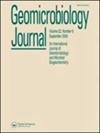新型生物表面活性剂木糖氧化无色杆菌PSA5对废润滑油的生物降解
IF 2.2
4区 环境科学与生态学
Q3 ENVIRONMENTAL SCIENCES
引用次数: 0
摘要
本文章由计算机程序翻译,如有差异,请以英文原文为准。
Biodegradation of Waste Lubricant Oil by a Novel Isolated Biosurfactant Producer- Achromobacter xylosoxidans PSA5
Abstract Waste lubricant oil (WLO) is a critical environmental issue because of its recycle and disposal challenges. A potent biosurfactant-producing bacterial strain was isolated by the enrichment culture technique using WLO as the sole carbon source from the oil-contaminated soils. The strain was identified as Achromobacter xylosoxidans (NCBI GenBank accession number: MW673656) based on the morphological, biochemical, and 16S rRNA gene sequencing. The preliminary characterization of the produced biosurfactant by biochemical methods revealed its glycolipid nature. The strain possessed extensive biodegradative potential and degraded various components present in WLO. The gas chromatography-mass spectrometry (GC-MS) analysis showed that the strain could degrade hydrocarbons (C7-C22) and diethyl phthalate, a priority pollutant, with a relative degradation of 43.87% within 7 days of incubation. The biodegradation of WLO by the strain confers its use in the bioremediation of oil-polluted environments, and the simultaneous biosurfactant production is undoubtedly a step toward greener technology.
求助全文
通过发布文献求助,成功后即可免费获取论文全文。
去求助
来源期刊

Geomicrobiology Journal
环境科学-地球科学综合
CiteScore
4.80
自引率
8.70%
发文量
70
审稿时长
3.3 months
期刊介绍:
Geomicrobiology Journal is a unified vehicle for research and review articles in geomicrobiology and microbial biogeochemistry. One or two special issues devoted to specific geomicrobiological topics are published each year. General articles deal with microbial transformations of geologically important minerals and elements, including those that occur in marine and freshwater environments, soils, mineral deposits and rock formations, and the environmental biogeochemical impact of these transformations. In this context, the functions of Bacteria and Archaea, yeasts, filamentous fungi, micro-algae, protists, and their viruses as geochemical agents are examined.
Articles may stress the nature of specific geologically important microorganisms and their activities, or the environmental and geological consequences of geomicrobiological activity.
The Journal covers an array of topics such as:
microbial weathering;
microbial roles in the formation and degradation of specific minerals;
mineralization of organic matter;
petroleum microbiology;
subsurface microbiology;
biofilm form and function, and other interfacial phenomena of geological importance;
biogeochemical cycling of elements;
isotopic fractionation;
paleomicrobiology.
Applied topics such as bioleaching microbiology, geomicrobiological prospecting, and groundwater pollution microbiology are addressed. New methods and techniques applied in geomicrobiological studies are also considered.
 求助内容:
求助内容: 应助结果提醒方式:
应助结果提醒方式:


